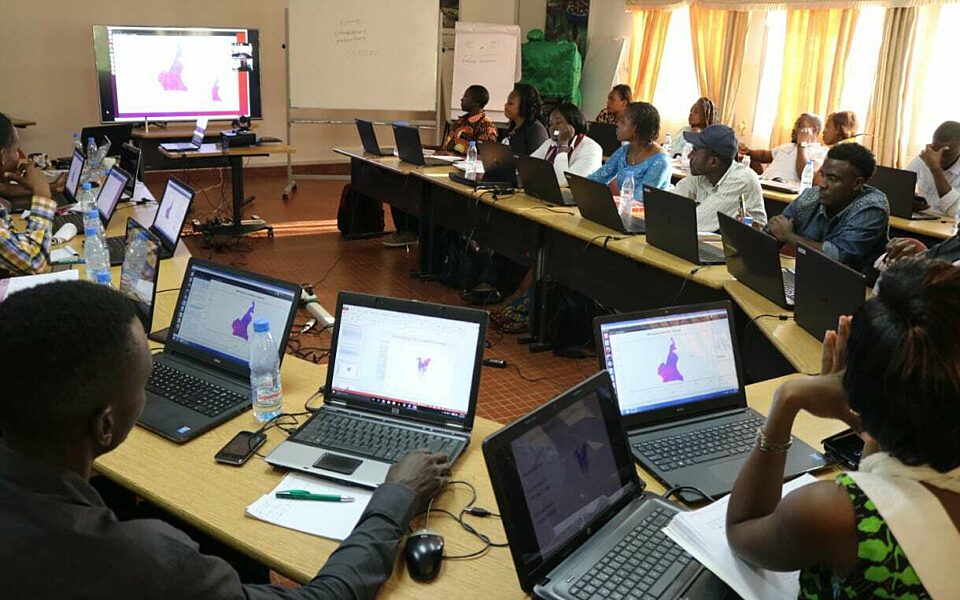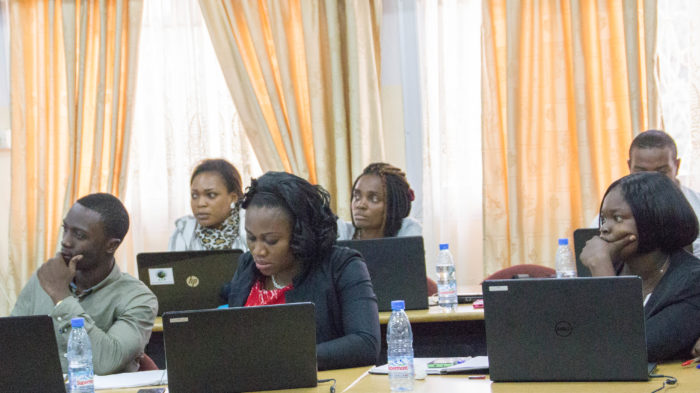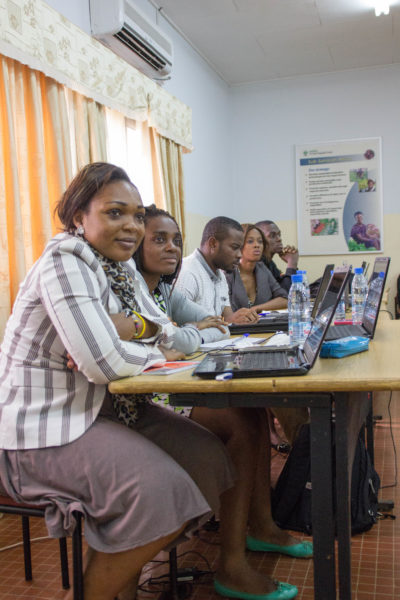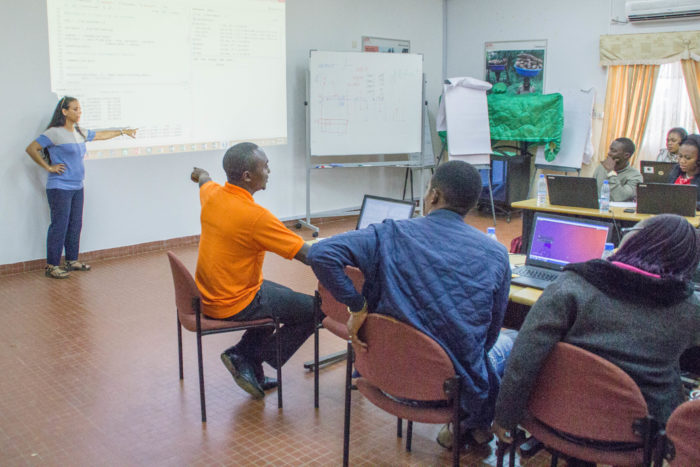
CBI Bioinformatics Workshop Summary

A group of young graduate students, doctoral candidates and conservation professionals converged in Yaoundé in June 2017 with a common goal: to jump on the R bandwagon. Convinced that learning to run statistical packages in R would help further their research, they came to participate in the CBI Bioinformatics workshop from universities around Cameroon – Buea, Yaoundé, Dschang and Maroua.

The three-day workshop was hosted at the Congo Basin Institute campus. The course work included learning how to conduct basic statistical tests and graphics in R and applying this in hands-on modules based on actual datasets relating to human geography, wildlife conservation and the impact of population growth and infrastructure on biodiversity in Cameroon. In the process, students not only learned how to analyze and interpret data but also how to better frame research questions and set up and test scientific hypotheses.
Students brought with them methodological questions relating to a variety of research interests including the diversity and distribution of birds, skinks and dragonflies; mosquitoes and disease transmission, and larger issues such as the impact of anthropogenic and climatic changes on biodiversity.

A participant in a previous bioinformatics workshop presented part of his PhD work on butterflies. The proficiency he’d acquired in R that had allowed him to attain his research goals was an inspiration to the students.
Afternoon video-conference lectures by researchers at UCLA threw open the window of future possibilities even further. Students were exposed to the latest advances in population genomic studies, and environmental association analyses that are part of the emerging research field of landscape genomics. These lectures, which included examples of studies in Cameroon, solicited great interest among the participants regarding the applicability of the analytical methods to their own research in conservation biology.